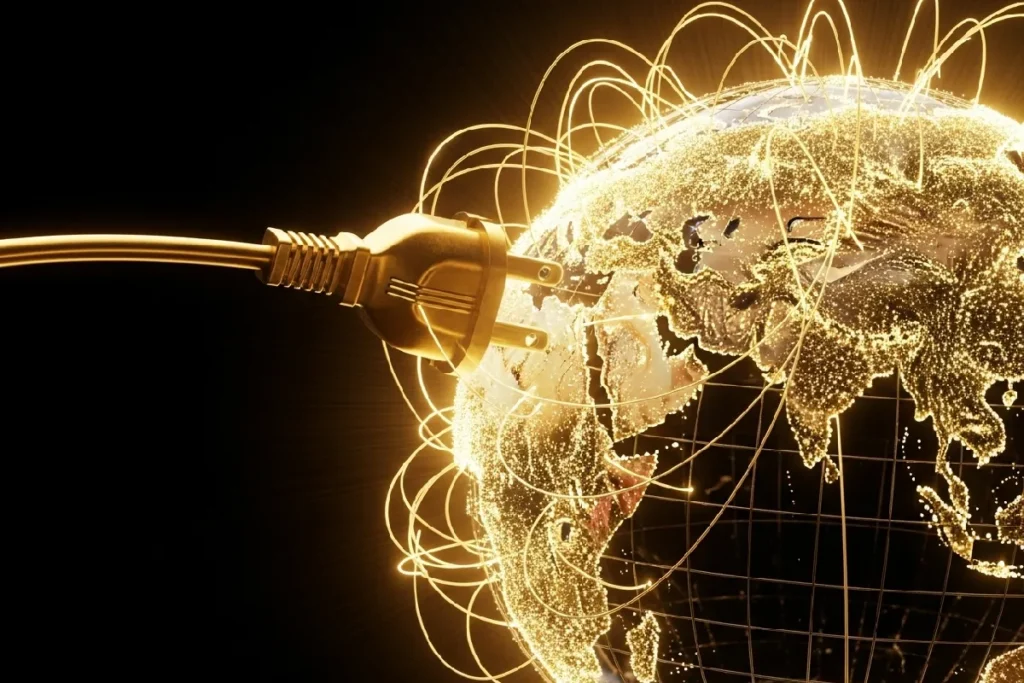Explore the evolution and significance of the electric plug in our daily lives. From its historical origins to the modern innovations of smart technology, discover how this simple device symbolizes our reliance on electricity and reflects societal inequalities. Learn about the various designs, safety features, and functionality of electric plugs, and examine the cultural perspectives on energy access. As we navigate the future with sustainable energy solutions, the electric plug remains a cornerstone of convenience and comfort in contemporary society.
Table of Contents
Introduction to the Electric Plug
The electric plug, an often-overlooked fixture in daily life, plays a fundamental role in how we access and utilize electricity. Its origins can be traced back to the late 19th century, a time characterized by rapid technological advancement and the electrification of homes and businesses. The initial designs were rudimentary, focusing primarily on safety and efficiency. As electricians and engineers sought to standardize these connections, the two-pronged and three-pronged designs emerged, reflecting a growing understanding of electrical safety and functionality.
Over the years, the electric plug has evolved significantly in terms of design, safety standards, and usability. Different countries have developed their own standards, resulting in various shapes and sizes, which not only cater to specific voltage requirements but also prevent accidental misuse. Despite these differences, the core function remains the same: to provide a reliable means of connecting appliances to an electrical outlet. This connection is essential for powering devices that range from household appliances like refrigerators and microwaves to essential gadgets like computers and smartphones.
In contemporary society, the electric plug has transcended its mere utility and has become emblematic of our reliance on technology. With the proliferation of electronic devices, the necessity for effective power connections has increased, prompting innovations such as smart plugs that allow for remote control and energy management. These devices enhance not just the convenience of our daily lives but also contribute to energy efficiency, illustrating the electric plug’s importance in addressing modern energy challenges.
As we delve deeper into the intricacies of the electric plug, it becomes evident that this simple yet vital component is more than just a means to access electricity; it represents the continuous evolution of technology in our daily lives.
The History of Electricity and Its Societal Impact
The journey of electricity began in ancient times, with early observations of static electricity and its properties. However, it wasn’t until the 17th century that significant strides were made. Pioneering scientists such as William Gilbert and Benjamin Franklin began to explore electric phenomena more rigorously. Franklin’s famous kite experiment in 1752 not only demonstrated the connection between lightning and electricity but also laid the groundwork for the understanding of this powerful force.
The 19th century marked a pivotal period in the history of electricity, as it transformed from a mere scientific curiosity into a powerful resource. In 1800, Alessandro Volta invented the voltaic pile, widely regarded as the first true battery, which led to the development of electric circuits and continual current flow. Following his inventions, innovators like Michael Faraday made breakthroughs in electromagnetism, leading to the creation of the first electric generator in 1831. These advancements catalyzed the growth of electrical engineering, ultimately paving the way for commercial applications.
The widespread use of electricity during the late 19th and early 20th centuries reshaped industries and daily life. With the advent of electric lighting in homes and streets, cities began to glow, extending productive hours and enhancing safety. Factories mechanized, reliance on manual labor decreased, and whole industries emerged, transforming both the economy and society. Electric appliances found their way into households, simplifying tasks and improving living standards. The introduction of the electric plug soon followed, providing a standardized means to harness electricity safely, making it an indispensable tool for modern living.
As society embraced these advancements, the impact of electricity became deeply embedded in everyday practices. The proliferation of electric power fundamentally altered how individuals interacted with their environments, allowing for unprecedented convenience and connectivity. Today, recognizing this historical foundation is essential to understanding the role the electric plug plays in our lives, as it seamlessly connects individuals to the vast world of electrical energy.

The Electric Plug as a Symbol of Power
The electric plug, an often-overlooked element of modern life, carries significant symbolic weight as a representation of control and privilege. In contemporary society, the ability to access electricity is frequently correlated with socioeconomic status. The simple act of plugging in serves not only as a connection to power supplies but as an indicator of broader access to resources, opportunities, and technological advancements.
Historically, access to electrical energy has been a distinguishing factor among societies and individuals. Regions that boast robust electrical infrastructure typically reap the benefits of enhanced development, innovation, and improved standards of living. This disparity highlights how the electric plug, in its basic function, embodies the notion of privilege; those with unimpeded access can easily utilize various electronic devices that enhance productivity, connectivity, and convenience.
Moreover, the electric plug can serve as a metaphor for modern dependency on technology. In an age where many aspects of daily life hinge on electrical power—from communication and entertainment to work and healthcare—the ability to plug in signifies a higher level of engagement with these essential services. The implications of this dependency further extend to discussions surrounding energy equity, where communities lacking adequate electrical access may find themselves marginalized in an increasingly digital world.
Ultimately, the electric plug symbolizes more than a mere connection point; it reflects societal divides and the distribution of power itself. As such, the disparities in access to electrical resources and technologies reveal deeper economic and social inequalities, making the electric plug a powerful emblem of the realities we face in contemporary life.
Understanding the Functionality of Electric Plug Designs
Electric plugs are essential components that facilitate the connection between electrical devices and the power supply. Across the globe, there are numerous designs of electric plugs, each serving similar fundamental purposes but differing in functionalities, shapes, and sizes. These variations are largely a reflection of local electrical standards, safety regulations, and cultural attitudes toward energy consumption.
One of the most notable differences among electric plug designs is the number of pins and their configuration. For instance, the Type A plug, commonly used in North America, features two flat parallel pins, while the Type C plug, prevalent in Europe, has two round pins. The differing pin shapes are not merely aesthetic; they ensure compatibility with specific sockets and contribute to the safe conduction of electricity. Additionally, the arrangement of these pins can impact the direction of current flow, enhancing appliance performance.
Safety features are another crucial aspect of plug design. Many designs incorporate mechanisms like shutters in the socket to prevent accidental contact with live pins. Moreover, some plugs are equipped with fuses, which provide an additional layer of protection by breaking the circuit in case of overload. This safety consideration reveals a cultural awareness and responsiveness toward minimizing electrical hazards, reflecting a broader attitude towards energy efficiency and safety standards.
Furthermore, the design variations echo differing electrical standards around the world. Regions with higher voltage systems may necessitate sturdier plug designs to handle increased current loads. This not only impacts the physical attributes of the plug but also influences consumer behavior and electricity consumption practices, shaping how individuals approach their electrical needs.
As we explore the functionality and significance of different electric plug designs, it becomes evident that these seemingly simple devices play an integral role in modern life, serving as essential conduits of energy that align with local customs and regulations.

Electricity: A Tool of Convenience and Comfort
Electricity has fundamentally transformed our modern lifestyles, enabling an array of appliances and technologies that enhance our convenience and comfort on a daily basis. The electric plug plays a pivotal role in this transformation, serving as the gateway through which we access electrical power. From kitchen gadgets to entertainment systems, the ability to easily plug in devices has reshaped our expectations regarding daily tasks and routines.
In contemporary households, appliances such as refrigerators, microwaves, and washing machines have become indispensable. These innovations not only save time but also reduce the manual labor involved in mundane tasks. For instance, cooking has been revolutionized with the introduction of electric stoves, air fryers, and slow cookers, allowing individuals to prepare meals with minimal effort. The electric plug has made it possible to operate these devices with ease, contributing significantly to a streamlined lifestyle.
Moreover, electricity caters to our comfort needs through climate control systems like air conditioners and heaters, which adjust indoor environments to our specific preferences. The availability of constant electrical power through a plug ensures that we can enjoy a comfortable atmosphere regardless of external weather conditions. This reliance on electrical energy has ingrained a sense of expectation in our daily lives; we often take for granted the immediate access to comfort that electricity provides.
Our reliance on electric appliances can influence our productivity as well. Office equipment such as computers and printers have become essential tools in facilitating work, further exemplifying how electricity enables us to accomplish tasks efficiently. In a world where speed and efficiency are highly valued, the importance of having reliable access to electrical power cannot be overstated, as it influences our work performance and overall quality of life.
Environmental Concerns Related to Electrical Power
The modern world relies heavily on electrical power, and consequently, the electric plug has become a ubiquitous symbol of our daily lives. However, this dependence raises significant environmental concerns associated with energy production. The ecological footprint of generating electricity varies widely based on the sources utilized. Traditional fossil fuels, such as coal, oil, and natural gas, contribute substantially to greenhouse gas emissions. These emissions are the primary drivers of climate change, compelling us to reconsider how we harness electricity.
Moreover, the extraction processes involved in obtaining fossil fuels often result in substantial ecological degradation. From oil spills to habitat destruction, the environmental toll is immense. In contrast, renewable energy sources like solar, wind, and hydroelectric power present a more sustainable alternative. Although they also possess environmental hurdles, such as land use and resource consumption, their potential to reduce reliance on fossil fuels presents a compelling case for investment in cleaner technologies.
The increasing demand for electricity resulting from population growth and technological advancements exacerbates these environmental issues. Smart grids and energy-efficient appliances are beginning to address the overconsumption of electricity. By optimizing energy usage and reducing waste, these technologies can help alleviate some of the detrimental effects on the environment. Additionally, public awareness and advocacy for sustainable practices play a crucial role in promoting more responsible energy consumption.
Transitioning to a more sustainable energy system necessitates a comprehensive approach, acknowledging the true costs of electricity generation. By encouraging the adoption of renewable energy and implementing energy-efficient solutions, it is possible to minimize the environmental impact associated with the widespread use of the electric plug. As we navigate the complexities of our energy future, a commitment to sustainability will be paramount in addressing the pressing concerns surrounding electrical power and its consequences on our planet.

The Future of Electric Plugs and Smart Technology
The future of electric plugs is being redefined by the advent of smart technology, leading to transformative advancements such as smart sockets and integrated energy management systems. These innovations not only enhance the functionality of traditional electric plugs, but also introduce a new level of interaction with electricity in our daily lives. Through the integration of smart technology, users can remotely control their appliances and monitor energy consumption via mobile applications. This has resulted in more efficient energy use, offering both economic and environmental benefits.
Smart plugs, equipped with Wi-Fi or Bluetooth capabilities, enable users to turn devices on or off from anywhere. Such features allow for schedules to be set for when appliances operate, which helps in minimizing energy wastage. Additionally, many smart sockets are designed to be compatible with voice-assisted technologies like Amazon Alexa or Google Assistant, making them more user-friendly. This seamless interaction between appliances and smart technology enhances user experience and fosters energy-efficient habits.
Furthermore, energy management systems integrated with smart plugs are revolutionizing how individuals and businesses approach energy consumption. These systems analyze usage patterns and provide insights that help users optimize their electricity utilization. For instance, the data collected can inform adjustments to usage during peak energy times, contributing to lower electricity bills and reduced strain on the power grid. Such advancements exemplify the broader implications of smart technology, enabling a more sustainable interaction with our energy resources.
As we move forward, it is clear that the integration of smart technologies with electric plugs will fundamentally alter our approach to energy management. The potential for greater control over energy consumption positions smart plugs as not only functional devices but also crucial components in the drive toward sustainability and efficiency in energy use.
Cultural Perspectives on Electricity and Control
The introduction of electricity into daily life has not only transformed practical aspects of modern existence but has also engendered various cultural narratives that reflect society’s relationship with energy. The symbolism surrounding the electric plug serves as a powerful metaphor for connection and control in contemporary environments. Within different cultures, the concept of ‘being plugged in’ is often associated with empowerment, suggesting that access to electricity fosters opportunities, innovation, and social progress. Conversely, the notion of being ‘tapped out’ highlights the vulnerabilities and dependencies that come with energy reliance.
For many communities, the electric plug embodies a vital link that sustains not only physical comfort but also opportunities for education, healthcare, and economic growth. Access to reliable electricity is increasingly viewed as a fundamental human right. Areas that lack stable energy sources often face significant barriers in utilizing technology for advancement, leaving them at a disadvantage in the global landscape. Consequently, the disparity in electricity access reflects broader social inequalities and highlights the ways in which energy access can empower individuals and communities to harness their potential.
In contrast, the dependency on electricity can produce a sense of vulnerability, especially in regions affected by frequent power outages or inadequate infrastructure. This reliance points to a growing concern about the implications of technological dependence, as communities may feel at the mercy of electric supply fluctuations. The tension between empowerment and dependency creates a nuanced dialogue within various cultures regarding energy consumption, sustainability, and development. As societies grapple with this dichotomy, the narrative surrounding the electric plug illustrates the essential role of energy in shaping decisions, offering insights into how people connect with technology and each other.
Conclusion: The Electric Plug as a Modern-Day Essential
The electric plug, often perceived merely as a functional device facilitating the flow of electricity, plays a far more significant role in contemporary society. Throughout our exploration, we have uncovered the myriad ways in which this seemingly simple component symbolizes the essence of modern living. As it connects us to a vast network of energy and resources, it exemplifies the dependency of our daily lives on electricity and the infrastructure that supports it.
Initially, we examined the practical aspects of the electric plug, detailing how it enables access to power for various devices, from household appliances to personal electronics. This accessibility is pivotal in our fast-paced lives, underpinning everything from communication to entertainment, thereby shaping our routines and interactions. Beyond functionality, the electric plug also represents the intricate systems of energy distribution that power our homes, offices, and cities, emphasizing the need for efficient management of resources in a world where sustainability is increasingly critical.
In summary, the electric plug is not just a tool for connecting devices but also a reflection of the broader implications of our relationship with energy. It embodies the duality of dependence and empowerment, urging us to consider how we engage with the resources that drive our modern existence. As we continue to innovate and evolve, the electric plug will remain an essential component of our daily lives, symbolizing both the convenience of technology and the imperative for responsible energy stewardship.







